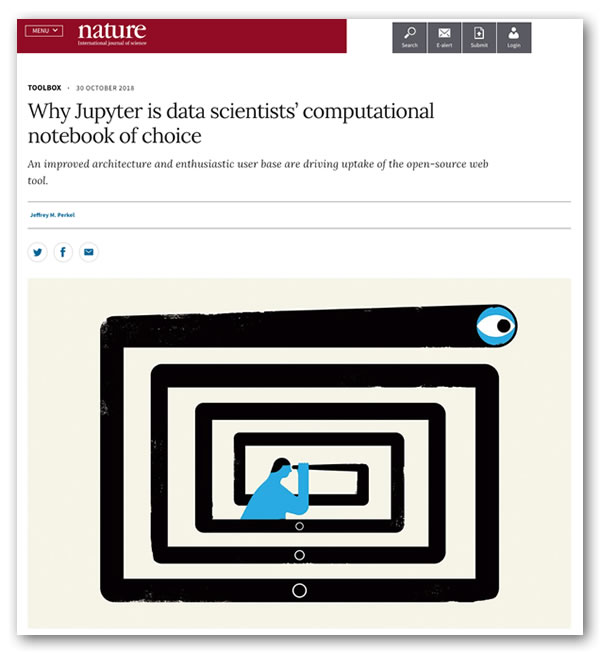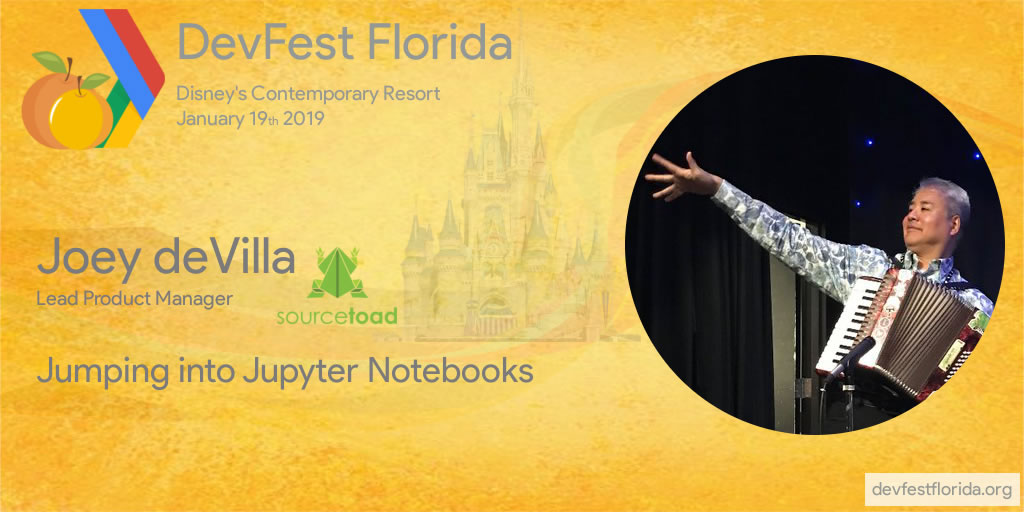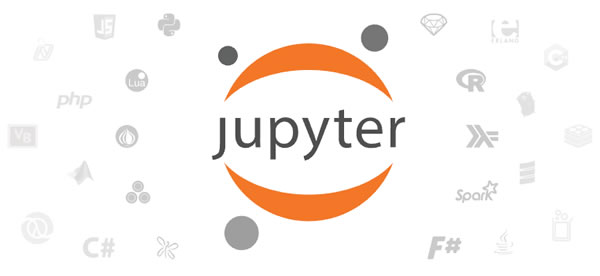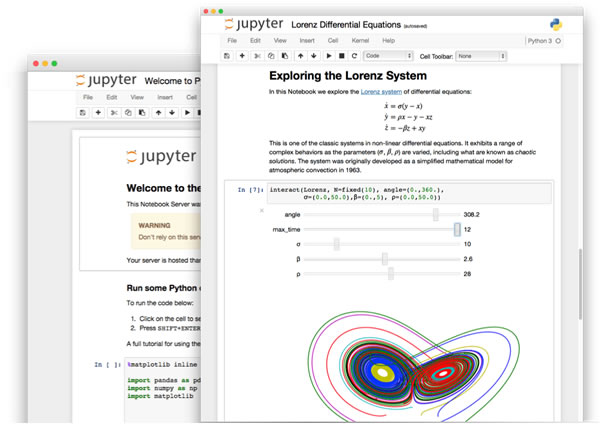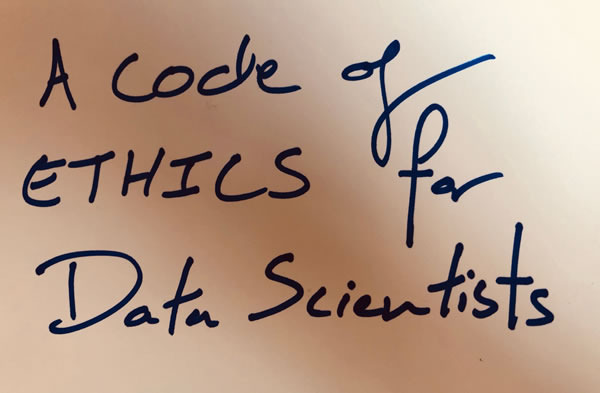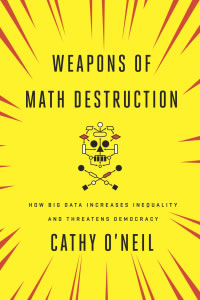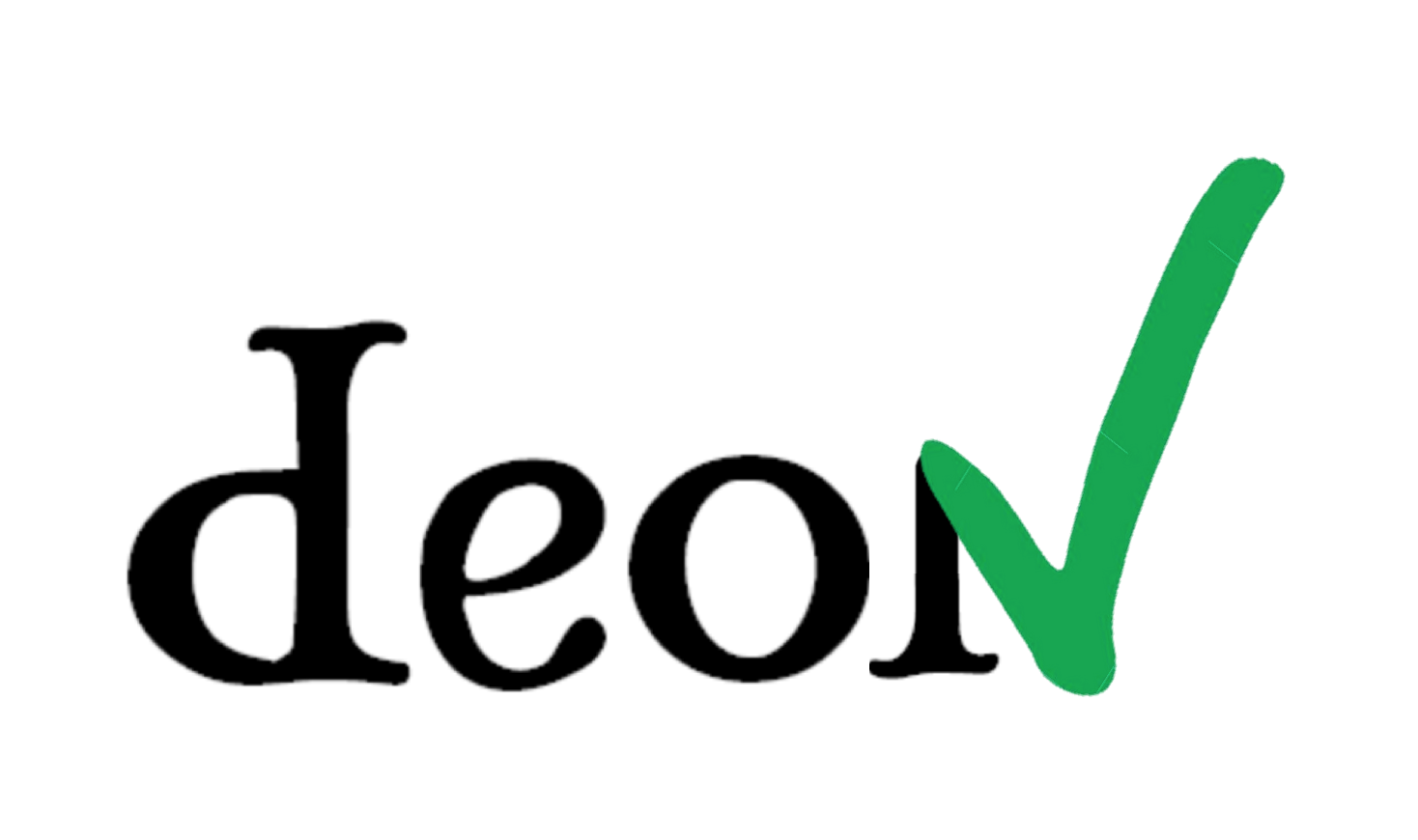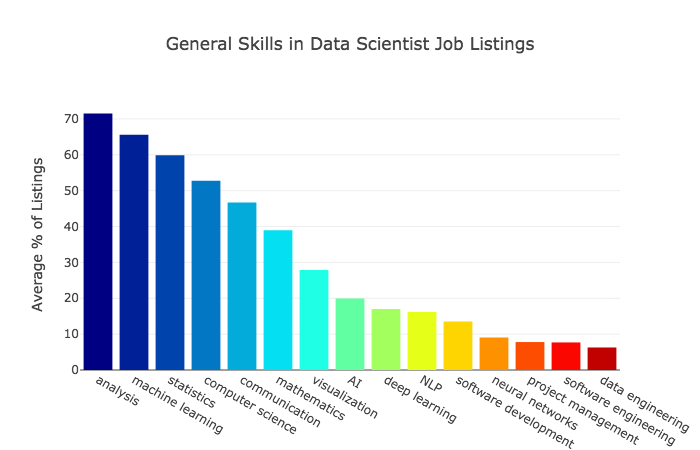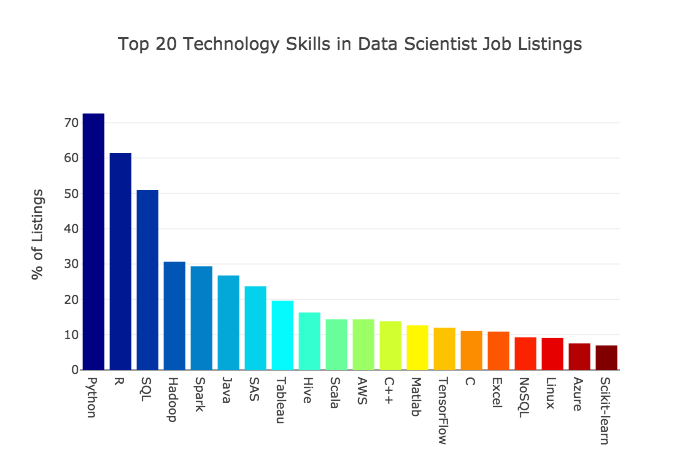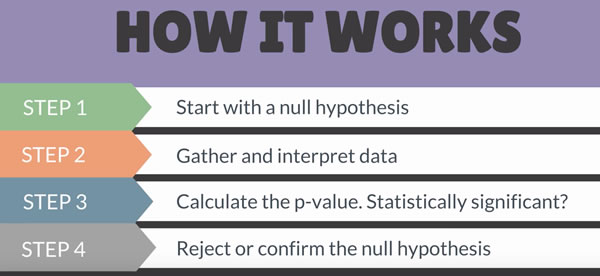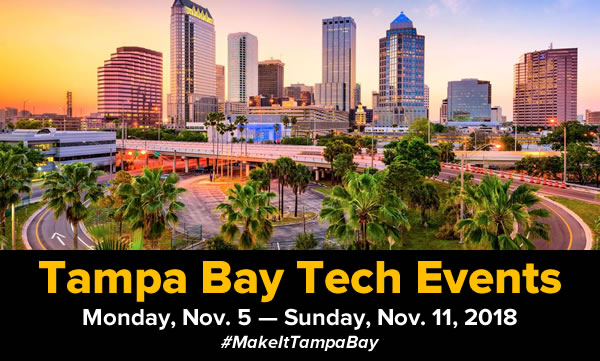
Every week, I compile a list of events for developers, technologists, tech entrepreneurs, and nerds in and around the Tampa Bay area. We’ve got a lot of events going on this week, and here they are!
Monday, November 5
- Cool ‘n Confident Toastmasters @ SPC – St. Petersburg/Gibbs Campus, 6:30 PM to 8:00 PM
- Largo Board Games Meetup — Xia: Embers of a Forsaken Star @ 7:00 PM to 9:00 PM
- Tampa Bay Bitcoin — Mining Mondays @ Tampa Bay Wave, 7:00 PM to 9:00 PM
- South Tampa Toastmasters @ Unity of Tampa, 7:00 PM to 8:15 PM
- Geekocracy! — Celebrate National Doughnut Day at ‘Datz & Dough’! @ Datz & Dough, 7:30 PM to 9:30 PM
Tuesday, November 6
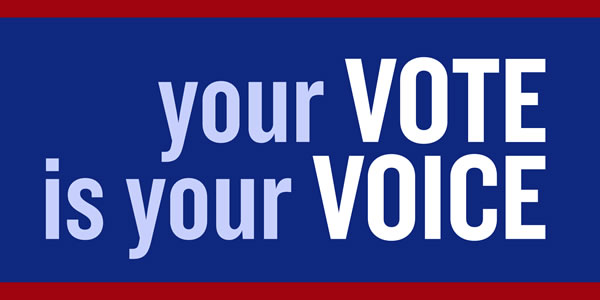
I’m not eligible to vote in the U.S. (I’m a Canadian citizen here on a green card), but if you are, go vote before you do anything extracurricular today!
- Dreamit X BISNOW Innovation Summit 2018 @ Tampa Marriott Waterside Hotel & Marina, Tuesday 8:00 AM to Wednesday 5:00 PM
- Entrepreneurs & Startups – Bradenton Networking & Education — Network & Learn – Stone Soup – Finding the Power of Community @ Station 2 Innovation Center, 11:30 AM to 1:00 PM
- Westshore Toastmasters @ FIVE Labs, 12:00 PM to 1:00 PM
- Brandon Boardgamers — Tuesday Night Gaming @ Cool Stuff Games, 5:00 PM to 8:00 PM
- Learn Cybersecurity Tampa — War Games: Intro to Strategy & GRC @ SecureSet, 5:30 PM to 9:00 PM
- Tampa Bay Agile — Living Off an Agile Landscape: Agile Farming vs Gardening (Quincy Jordan) @ KForce Tampa, 6:00 PM to 8:00 PM
- Tampa Hackerspace member meeting @ Tampa Hackerspace, 6:00 PM to 7:00 PM
- Sarasota Entrepreneurs Meetup — How Can I Create a Business From Idea to Making Revenue? Learn in 6 Month Class @ John Greer Auto Sales, 6:00 PM to 8:00 PM
- Game Club Tampa Meetup — Tuesday Nite Roleplayers (RPGs) @ Grand Arena of Mind Expansion, 6:30 PM to 9:30 PM
- CLEARWATER eMarketing Groups — Internet Marketing for Business Owners @ ihop (30200 US Hwy 19, South of Curlew Rd, Clearwater), 7:00 PM to 10:00 PM
- St. Pete Beers ‘n Board Games Meetup for Young Adults @ Flying Boat Brewing Company, 7:00 PM to 10:00 PM
Wednesday, November 7
- Open/FREE Coworking for Latino Tech Entrepreneurs @ FirstWaVE Venture Center, 8:00 AM to 11:00 AM
- 1 Million Cups St. Pete — Overcome the Barrier, Inc / Showered and Empowered, Inc. @ 9:00 AM
- 1 Million Cups Tampa — American Freedom Distillery / Raise the Bar Design @ 9:00 AM
- Suncoast Developers Guild Open House @ Suncoast Developers Guild, 12:00 PM to 2:00 PM
- TampaBay Cryptocurrency and Blockchain Technology Meetup — SOFWERX Security Summit @ SOFWERX Underground, 5:00 PM to 8:00 PM
- Code for Tampa Bay Brigade — Open Hack Night @ Entrepreneur Collaborative Center (ECC), 5:30 PM to 7:30 PM
- Tampa Bay Business Intelligence and Data Analytics — Monthly Meeting @ AgileThought, Inc, 6:00 PM to 8:00 PM
- Learn Cybersecurity Tampa — SecureSet Info Night Tampa @ SecureSet Tampa Campus, 6:00 PM to 7:00 PM
- Tampa Bay Agile — Tampa Bay Scrum Masters Guild @ KForce Tampa, 6:00 PM to 8:00 PM
- Tampa Artificial Intelligence Meetup Monthly Meeting @ Entrepreneur Collaborative Center, 6:30 PM to 8:00 PM
- Learn to Code | Thinkful Tampa — Web Development vs Data Science @ Secureset Academy, 6:30 PM to 8:00 PM
- Design St. Pete — How to give and receive design feedback @ Rising Tide Innovation Center, 6:45 PM to 8:45 PM
- Laser Cutter Orientation @ Tampa Hackerspace, 7:00 PM to 9:00 PM
- St Pete .NET Meetup — .NET Core and Containers with Shayne Boyer @ Bank of the Ozark’s Innovation Lab, 7:00 PM to 9:00 PM
- Nerdbrew Events — Games & Grog @ Peabody’s!, 7:00 PM to 11:00 PM
- Women In Linux — Understanding Linux @ 7:00 PM to 9:00 PM
Thursday, November 8
- The Green Asterisk Coworking @ The Pearl, 11:00 AM to 4:00 PM
- Coffee & Code @ Pour House at Grand Central, 11:15 AM to 1:00 PM
- Tampa Python Meetup — Student Mentoring @ SecureSet in Tampa @ 11:30 AM to 12:30 PM
- Learn Cybersecurity Tampa — War Games: Applied Cryptography 1 @ SecureSet, 5:30 PM to 9:00 PM
- Tampa Software QA and Testing Meetup — Artificial intelligence and testing in the digital age @ Sogeti Tampa, 5:30 PM to 7:30 PM
- Lean Beer for All Things Agile (St Petersburg) @ Pour Tap Room, 6:00 PM to 7:30 PM
- Joomla! User Group Tampa — Making your Joomla site fly – Optimizing your website for Google page speed. @ SiteWit Corporation, 6:00 PM to 7:30 PM
- Tampa Bay Azure User Group — IoT – Concepts, Practical Use Cases and Azure @ Microsoft Corporation, 6:00 PM to 8:00 PM
- Lean Beer for All Things Agile (Lakeland) @ Swan Brewing, 6:00 PM to 8:30 PM
- Tampa Bay AWS User Group @ Happy Hour with AWS Experts, 6:00 PM to 8:00 PM
- Seffner D&D Meetup — 1st ed AD&D Campaign. Open to new players. @ 6:00 PM to 10:00 PM
- Tampa Bay UX Group — World Usability Day Tampa Bay 2018 Workshop: Avoiding ‘Accidentally Evil’ Design @ Keiser University Tampa, 6:30 PM to 8:30 PM
- Front-End Design Meetup — Accessible By Design with Tim Knight @ Suncoast Developers Guild, 6:30 PM to 8:00 PM
- Front-End Design Meetup at SDG: Accessible By Design with Tim Knight @ Suncoast Developers Guild, 6:30 PM to 8:30 PM
- Geekocracy! — Feast at Mr. Dunderbak’s Biergarten! @ Mr. Dunderbak’s, 7:00 PM to 10:00 PM
- IPA’s & API’s — Version 2.0 @ Arkane Aleworks, 7:00 PM to 9:00 PM
Friday, November 9
- Lean Coffee for All Things Agile (Waters Location) @ Panera Bread (6001 W Waters Ave, Tampa), 7:30 AM to 8:30 AM
- Lean Coffee for All Things Agile (St Petersburg / Tyrone) @ Panera (2420 66th St North, St Petersburg), 7:30 AM to 8:30 AM
- Florida Funders Institute Lunch & Learn @ USF Health, CAMLS, 11:30 AM to 1:00 PM
- Game On – Gaming — Storm Kings Thunder (Subject to interest) @ Game On Movies & Games, 6:00 PM to 9:00 PM
- Game Club Tampa Meetup — New 5e Campaign – Heroes of Faerun (LFP) @ Grand Arena of Mind Expansion, 6:30 PM to 11:00 PM
- Tampa Monopoly Meetup @ Panera Bread (112 S Westshore, Tampa)
- Geekocracy! — National Louisiana Day! @ Tibby’s New Orleans Kitchen, 7:30 PM to 10:30 PM
- Geekocracy! — Tampa Theater: Bill and Ted’s Excellent Adventure! @ The Tampa Theater, 10:30 PM to 12:30 AM
Saturday, November 10
- BarCamp Tampa Bay @ University Mall – West Wing (near the old J.C. Penney store), 8:00 AM to 5:00 PM
- Tampa Drones Meetup — Racing Drone Free Fly @ Highlander Park, 10:00 AM to 1:00 PM
- Tampa Drones Meetup — FPV Experience – MOSI Volunteer Opportunity @ MOSI (Museum of Science and Industry), 10:00 AM to 2:30 PM
- Toastmasters District 48 — The Order of Smedley .. Advanced Club @ 10:30 AM to 12:30 PM
- Game Club Tampa Meetup — G.A.M.E RPG Convention @ Grand Arena of Mind Expansion, 12:00 PM to 10:00 PM
- Tampa School of AI — Catch up on projects and ideas @ Starbucks (3619 W Gandy Blvd, Tampa), 12:00 PM to 2:00 PM
- Nerd Night Out — NNO Book Club: The Fifth Season @ Origami Sushi, 1:00 PM to 3:00 PM
- Holiday Robotics Meetup | For Adults | Novices Welcome — First Meetup! @ Glory Days Grill, 1:00 PM to 3:00 PM
- Critical Hit Games — Keyforge Prelaunch Event #1 @ Critical Hit Games, 3:00 PM to 6:00 PM
- Board Games and Card Games in Sarasota & Bradenton — Games at Kelly & Scott’s House @ 6:00 PM to 9:00 PM
- St. Pete Makers — Open Make Night / Open House @ St. Pete Makers, 6:00 PM to 8:00 PM
- Critical Hit Games — Keyforge Prelaunch Event #2 @ Critical Hit Games, 8:00 PM to 11:00 PM
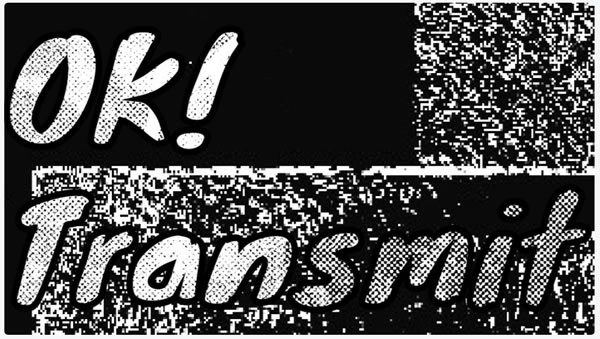
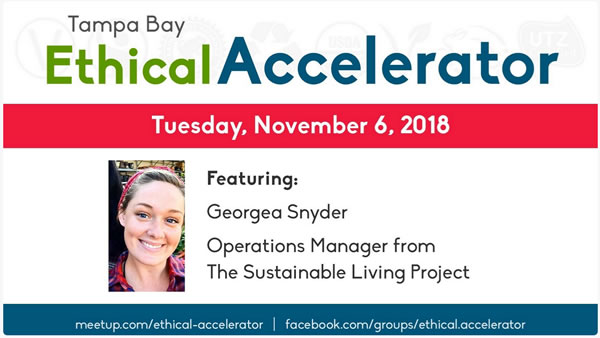




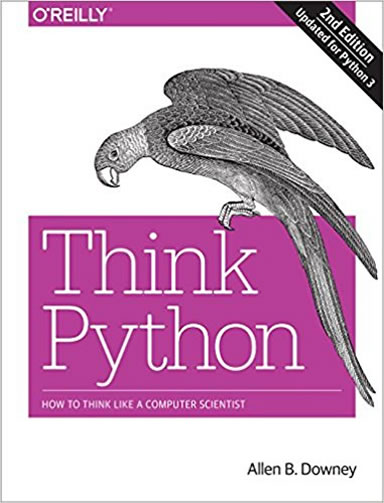
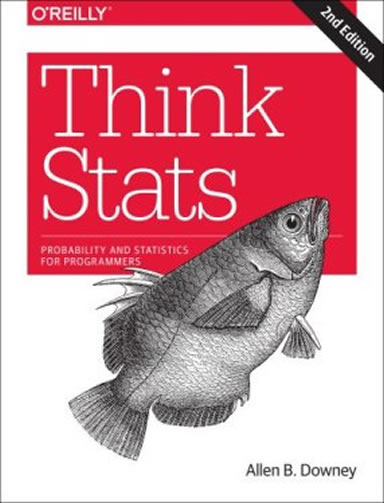
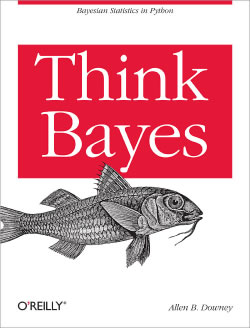
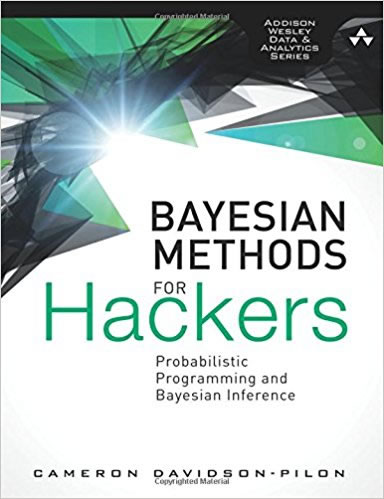
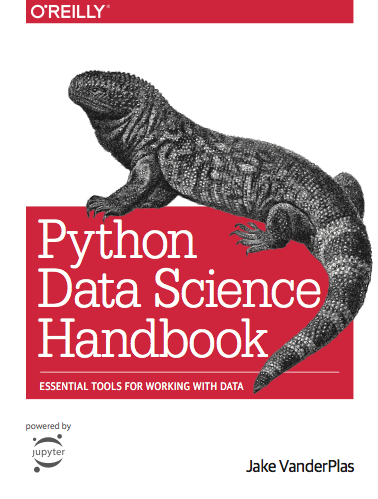
 From the book site:
From the book site: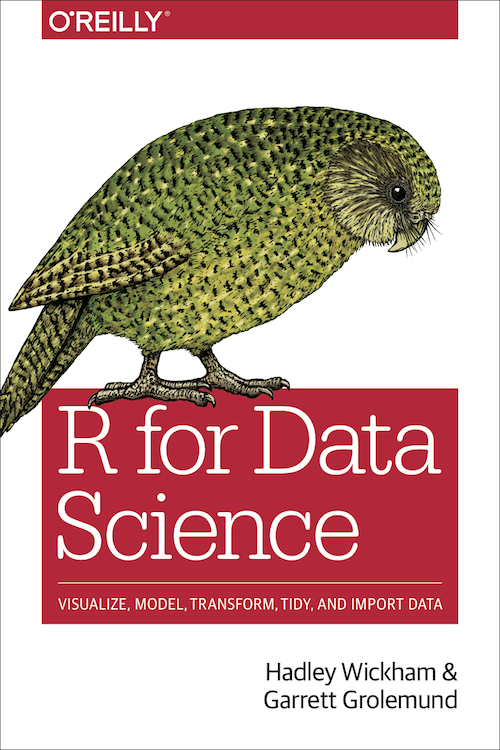
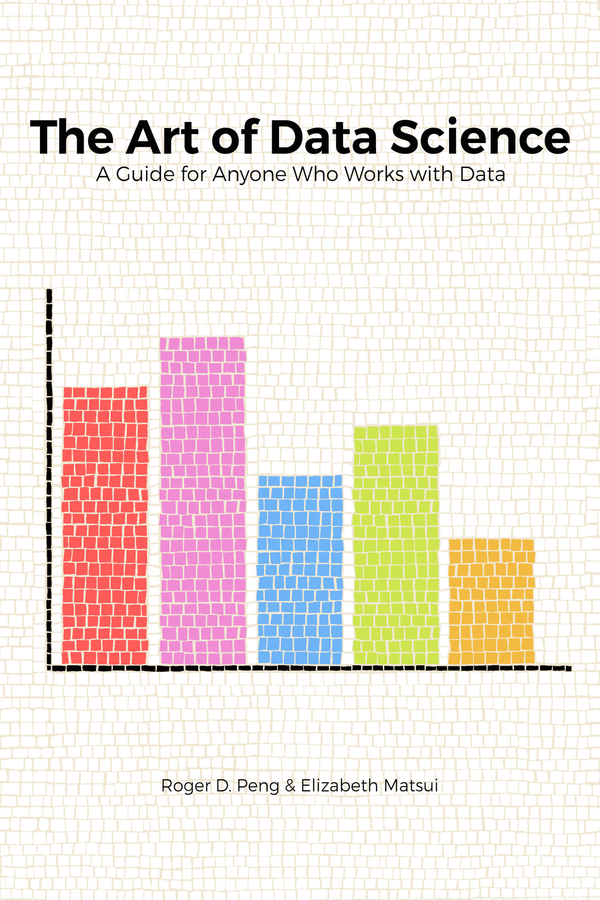 From the book site:
From the book site: